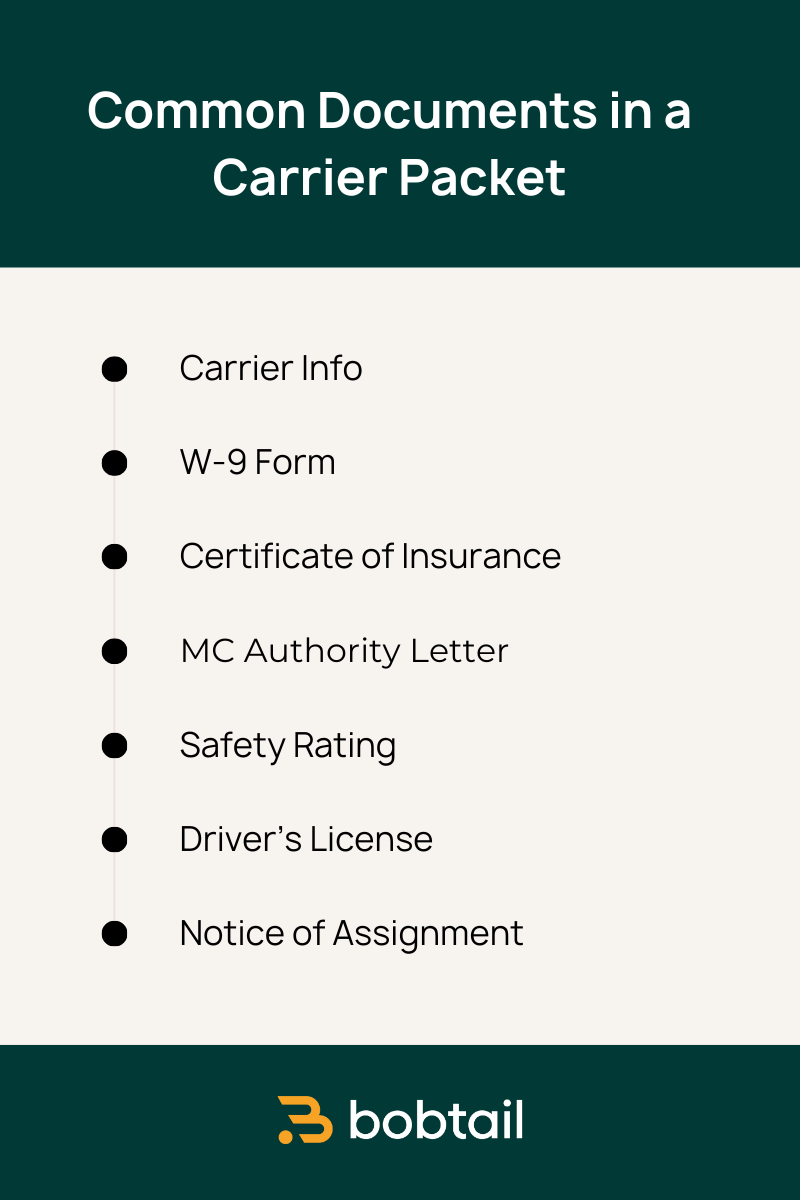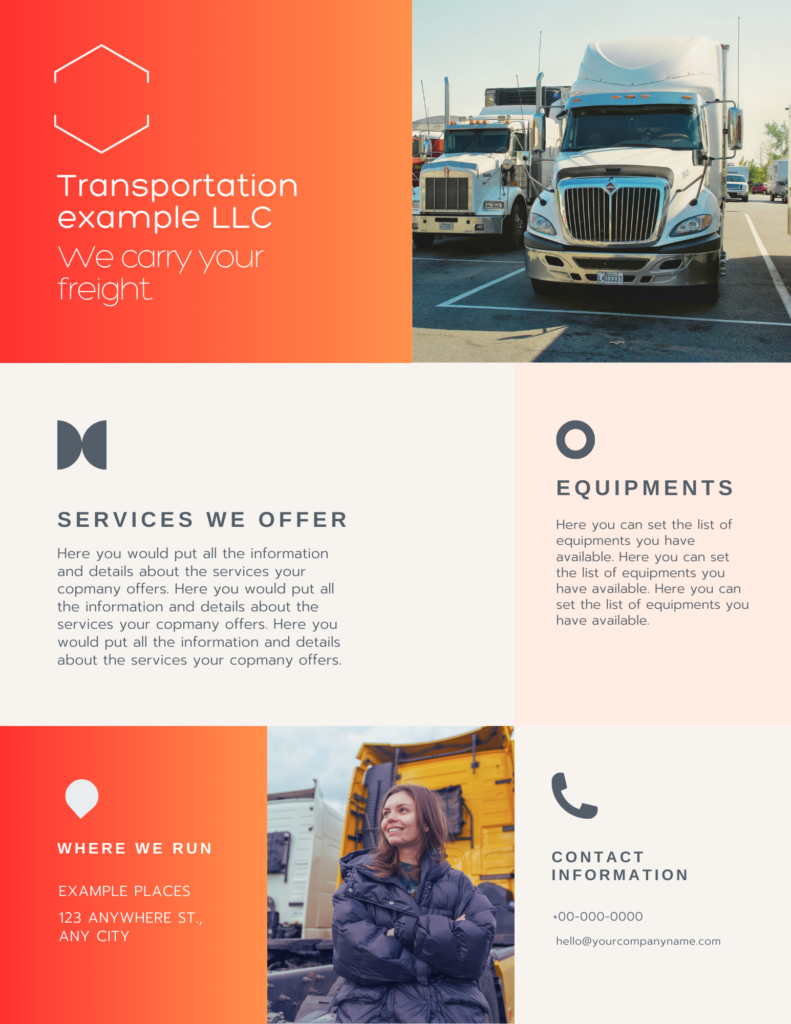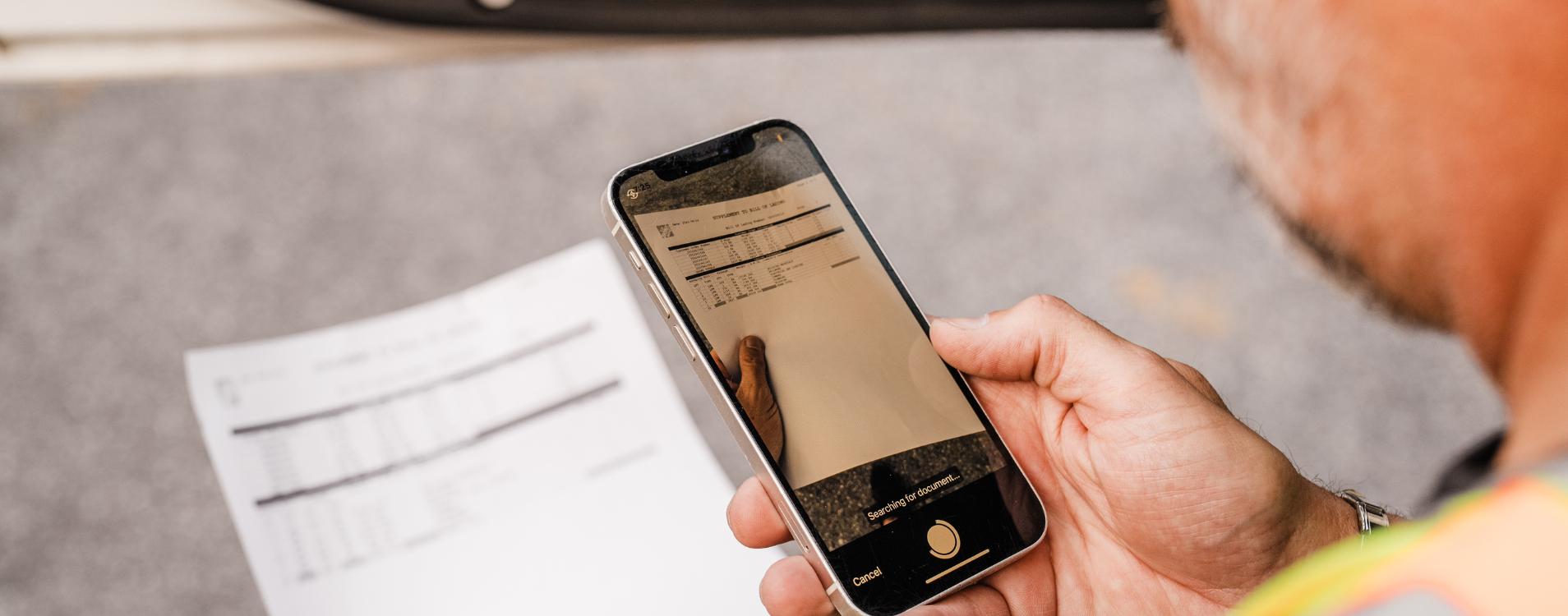Carrier Packets: Documents Every Trucking Company Should Have On Hand
In a recent event, we talked with Dale Prax, President and CEO of Direct Expedite (broker), about what carriers can do to impress their customers and encourage repeat business. One of his tips? Provide documents to brokers proactively.
But to be able to do that, you need to know what documents to have on hand. This is where a carrier packet comes in. Let’s talk about what a carrier packet is and how to effectively organize the information about your business so that brokers want to call you again and again!
Watch the full event recording to learn all of Dale’s tips here on YouTube.
What is a carrier packet?
A carrier packet is a collection of documents and agreements a broker will collect from you when they are working with you for the first time.
It facilitates the process of onboarding your business as a carrier into their system and ensures you meet all the compliance requirements. It also can help establish expectations for the business relationship between the carrier and the broker.
Some brokers may have an automated system where you will upload documentation to a platform. Others will send you a list of the documents they need from you to complete the packet. Still, others may not have a standard system in place, making it all the more important to have your information readily available.
What is included in a Carrier Packet?
Carrier packets may include different documents depending on the broker you’re working with. Here are the most common documents a carrier needs to provide to complete a carrier packet:

New carrier information
This includes the most basic information about your business, such as your company name, mailing address, MC and DOT numbers, EIN, and SCAC (if applicable).
W-9 form
This is required by the IRS. You should keep a copy filled out and updated for the current year so it’s ready to send whenever you need it.
Certificate of Insurance (COI)
The broker needs to verify that you have the required insurance policies, including the minimum required amount of liability insurance. They also will confirm that your COIs are up-to-date. Brokers may ask to be listed as a certificate holder – you can contact your insurance company to request this.
Learn more about how to shop for insurance here.
Copy of MC operating authority letter
Your MC authority is granted by the FMCSA and gives you the legal right to provide transportation services as a carrier. This may not be required for intrastate carriers.
Learn more about how to get your operating authority here.
Safety rating
You must provide your motor carrier safety rating. Depending on your compliance history, your “Safety Fitness Determination” may be satisfactory, conditional, or unsatisfactory. If you’re a new trucking business, you may not have a safety rating if you haven’t had your New Entrant Safety Audit.
Learn more about safety ratings for carriers here.
Driver’s license
The carrier must provide a copy of the driver’s license to prove they fulfill the requirements for operating the truck legally. Be sure to include photos of the front and back of the license.
Learn more about CDL requirements here.
Notice of Assignment (NOA)
This lets the broker know that they will be billed by your factoring company and not to pay you directly. When you sign up for Bobtail’s factoring service, you will receive an NOA and can request one from your dedicated support team at any time.
Learn more about notices of assignment and factoring here.
In addition to the documents you must provide the broker, brokers should also provide you with the following to complete the carrier packet:
Broker-carrier agreement
A broker will have a standard format that lists MC numbers of the two parties, the date of the agreement, the payment terms, invoicing process, requirements, limitations, as well as pickup and delivery dates and times.
Proof of the broker’s surety bond
All brokers must have a $75,000 surety bond. In the event that the broker declares bankruptcy, you can file on this bond to receive payment for outstanding invoices.
Learn more about what to do if a broker doesn’t pay here.
Make Your Carrier Packet Stand Out.
Above, we listed what any carrier would likely need to send to a broker to start working with them. But you do want to be just any carrier, right? No! You need to stand out from the crowd.
Here are a few materials we recommend you prepare to look extra professional and prepared:
A business 1-pager
Create a nicely formatted page with the basic information about your business. This should include a company logo, a brief description of the services you offer, an equipment list, the regions and states you run in, and a value proposition for your business.
Find easy, free templates here on Canva. See an example here:

A physical business address
A PO box or virtual office will set off an alarm for many brokers for possible fraudulent activity. Listing a real, physical address with the FMCSA and on your materials will give them peace of mind. Also, be sure you don’t share a business address with a freight forwarder or broker. This could lead them to believe that you are involved in double-brokering.
Learn more about double-brokering and other types of fraud in the trucking industry here.
A website
Squarespace and Wix make it easy and inexpensive to put together a simple website that can include photos of your truck(s), contact information, and MC and DOT numbers.
Photos
Keep photos of your truck(s), decals, and driver’s licenses on hand in case you need to resend them to your customer.
COI with VIN(s)
You can request that your insurance company list the vehicle identification numbers (VINs) of your trucks on your certificate of insurance. Brokers will appreciate this extra layer of verification.
List of references
Ask the customers you’ve worked with in the past for permission to list them as references. Brokers meeting you for the first time will appreciate being able to call someone to vet your business.
If you are a brand new company, you can consider listing previous employers, a representative from your factoring company, your insurance agent, or a contact at the dealership where you bought your equipment. Regardless of who you list, make sure you tell them you listed them as a reference so they can expect calls from brokers looking to work with you.
Always Be Prepared, Organized, and Proactive
According to Dale, one of the best things a carrier can do is to provide documentation proactively. This means you need to have your documents well-organized and be able to anticipate your customers’ needs with additional information on hand.
At times, there may not be a lot of time between booking the load and the pickup time. If you can provide all the information for your business in a quick email to the broker, this could save them a lot of time and promote a good first impression.
A simple way to always have these files on hand is to create folders on your computer and your phone with a copy of all the documents listed above. Also, create a single PDF document with all of the documents, using your business 1-pager as the first page. This way, you will always have the start of your carrier packet ready to go.
Remember, that different brokers will have different systems for accepting information. Some brokers will only accept documents uploaded to their website or app. Be sure that you understand how they prefer you send the documents they need before piling them into an email. If it’s not clear, ask!



